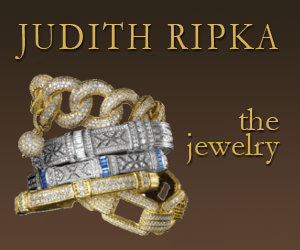Sunscreen Tips with Dr. Ava Shamban

Most of us wander into our local drugstore, peruse the shelves and ultimately select that sunscreen we will wear based on haphazardly reading over the ingredients or by choosing one with a fancy label. Instead we should be choosing our sunscreens based on something a bit concrete than the cutesy photo on the tube or the laundry list of long-named ingredients. I was lucky enough to meet with Dr. Ava Shamban, M.D., dermatology expert from Extreme Makeover, and thanks to her and her new book, Heal Your Skin, I know have a better understanding about protecting my skin from the sun.
UVA, UVB, UVC, SPF? What Do All These Initials Mean?
I always knew that UV rays were bad, but to be honest, I had no clue why. While leafing through the fourth chapter on Heal Your Skin, I discovered just what these little initials meant and why they are so hazardous to our health.
UVA rays make up 95% of the UV radiation that reach’s our Earth’s surface and are present throughout the entire day, yes, even when it is cloudy. The scary part about UVA rays is that you are exposed to them all day long, even when you are inside.
UVB rays are the rays that cause sunburns and redness when exposed to them. These are the rays that really contribute to skin cancer and photo-aging. The intensity of the rays varies throughout the year and throughout the day, but can damage our skin any time we are exposed.
UVC rays (I hope I am not the only one that didn’t know there was such a thing as UVC rays) are generally absorbed by the Earth’s ozone layer so they do net tend to reach Earth.
SPF- Sun Protection Factor is the “laboratory measure of the effectiveness of sunscreen,” Dr. Shamban states in her book. There are so many theories about SPF works, but according to Shamban, “the SPF is the amount of UV radiation needed to cause sunburn on skin with the sunscreen on…if you are wearing SPF 30, your skin will not burn until it has been exposed to 30 times the amount of solar energy that would normally cause it to burn.”
Sunscreen, Sunblock, Broad Spectrum. What’s the difference?
Sunscreen often contains active chemicals that absorb, reflect, or scatter UV rays to it prevents them from penetrating the skin. Sunscreens absorb UVB rays, and may filter out some UVA rays. Sunblock on the other hand contains ingredients that physically block the sun’s rays by reflecting and dispersing them away from our skin. Broad spectrum is another word commonly found on out SPF bottles, and means that it contains ingredients that protect our skin from UVA and UVB rays.
Ava’s tips for sun protection:
- Look for the ingredients Helioplex, Mexoryl, zinc oxide, or titanium dioxide when selecting a sunscreen
- Apply 2 coats of SPF and reapply frequently, especially after swimming, even if it says ‘waterproof’
- Choose an SPF of 30 or higher
- Choose an SPF that also contains antioxidant, which help to prevent UV damage
- Test out a bunch of SPF’s until you find the type that fits your lifestyle the best, whether it is a spray, a lotion, or a powder.
- Don’t forget your hairline, ears, scalp, hands, lips, etc. All exposed skin needs protection
- Wear a hat, sunglasses, and SPF-rated clothing whenever in direct sunlight
Read more of Dr. Ava’s tips about skincare, sun protection, fitness, nutrition, and much more in her book, Heal Your Skin, which can be purchased at amazon.com. You can also visit Ava’s website at AvaMD.com.

















 Mylifeinbeauty.com is a San Francisco based beauty blog. My Life in Beauty.com provides readers with up-to-the-minute beauty events and trends in the world of Beauty – stay tuned!
Xoxo
Mylifeinbeauty.com is a San Francisco based beauty blog. My Life in Beauty.com provides readers with up-to-the-minute beauty events and trends in the world of Beauty – stay tuned!
Xoxo